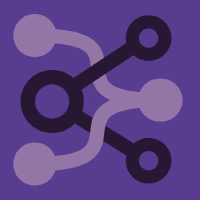Topic Menu
► Topic MenuTopic Editors

Computer Vision and Image Processing

Topic Information
Dear Colleagues,
Computer vision is a scientific discipline that aims at developing models for understanding our 3D environment using cameras. Further, image processing can be understood as the whole body of techniques that extract useful information directly from images or to process them for optimal subsequent analysis. At any rate, computer vision and image processing are two closely related fields which can be considered as a work area used in almost any research involving cameras or any image sensor to acquire information from the scenes or working environments. Thus, the main aim of this Topic is to cover some of the relevant areas where computer vision/image processing is applied, including but not limited to:
- Three-dimensional image acquisition, processing, and visualization
- Scene understanding
- Greyscale, color, and multispectral image processing
- Multimodal sensor fusion
- Industrial inspection
- Robotics
- Surveillance
- Airborne and satellite on-board image acquisition platforms.
- Computational models of vision
- Imaging psychophysics
- Etc.
Prof. Dr. Silvia Liberata Ullo
Topic Editor
Keywords
- 3D acquisition, processing, and visualization
- scene understanding
- multimodal sensor processing and fusion
- multispectral, color, and greyscale image processing
- industrial quality inspection
- computer vision for robotics
- computer vision for surveillance
- airborne and satellite on-board image acquisition platforms
- computational models of vision
- imaging psychophysics
Participating Journals
| Journal Name | Impact Factor | CiteScore | Launched Year | First Decision (median) | APC |
|---|---|---|---|---|---|

Applied Sciences
|
2.5 | 5.3 | 2011 | 18.4 Days | CHF 2400 |

Electronics
|
2.6 | 5.3 | 2012 | 16.4 Days | CHF 2400 |

Modelling
|
1.3 | 2.7 | 2020 | 18.9 Days | CHF 1000 |

Journal of Imaging
|
2.7 | 5.9 | 2015 | 18.3 Days | CHF 1800 |

Preprints.org is a multidisciplinary platform offering a preprint service designed to facilitate the early sharing of your research. It supports and empowers your research journey from the very beginning.
MDPI Topics is collaborating with Preprints.org and has established a direct connection between MDPI journals and the platform. Authors are encouraged to take advantage of this opportunity by posting their preprints at Preprints.org prior to publication:
- Share your research immediately: disseminate your ideas prior to publication and establish priority for your work.
- Safeguard your intellectual contribution: Protect your ideas with a time-stamped preprint that serves as proof of your research timeline.
- Boost visibility and impact: Increase the reach and influence of your research by making it accessible to a global audience.
- Gain early feedback: Receive valuable input and insights from peers before submitting to a journal.
- Ensure broad indexing: Web of Science (Preprint Citation Index), Google Scholar, Crossref, SHARE, PrePubMed, Scilit and Europe PMC.
Related Topic
- Computer Vision and Image Processing, 2nd Edition (69 articles)

